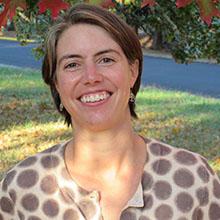Community Assets and Coastal Hazards
This project seeks to identify important community assets to Oregon Coastal communities and understand how those assets may be utilized during and after disasters.
Research Questions:
- Najiba Rashid (left) and Jenna Tilt (right) distribute surveys at the Get Ready Fair, Camp Rilea, City of Warrenton, Clatsop County on September 30, 2023. Photo credit: Felicia Olmeta Schult.
- Najiba Rashid (left) and Jenna Tilt (right) distribute surveys at the Get Ready Fair, Camp Rilea, City of Warrenton, Clatsop County on September 30, 2023. Photo credit: Felicia Olmeta Schult.
- Irene Pablo-Lora distributes surveys at the Hispanic/Latinx Month Celebration organized by Consejo Hispano in the City of Seaside, Clatsop County on October 7, 2023. Photo credit: Felicia Olmeta Schult.
- Felicia Olmeta Schult (left) and Amina Meselhe (right) distribute surveys at the City of Waldport High School football game, Lincoln County on October 20, 2023. Photo credit: Matt Schult.
Our Research:
To answer these questions, a survey was developed utilizing previous qualitative research conducted by Hub members and collaborators to identify appropriate survey answer responses that capture potential community assets preferences. The survey instrument was tested and reviewed by Hub researchers and community collaborators including Consejo Hispano, OSU Extension, and Clatsop Emergency management.
During the Fall 2023, the survey was distributed in both English and Spanish during community events in Lincoln, Tillamook, and Clatsop Counties including the Newport Pride Festival in Newport, Oregon, the Latinx Heritage Festival in Seaside, Oregon, the Clatsop County Emergency Management Readiness Fair and at a several local events including high school football games. We then distributed the survey online, enlisting our community partners to distribute the survey through their listservs and social media accounts, as well as Oregon coastal counties and municipalities. These two methods of recruitment resulted in 646 completed surveys.
After limiting the sample to those residing in coastal communities, 524 responses were analyzed. We investigated the types of assets identified by community members, the reasons those assets were seen as important, and what actions people thought were most important for their community’s resilience.
Coastal residents highly valued natural spaces like beaches, and wanted to return to the places they value (including natural spaces) after a disaster. Community centers were cited as particularly important to protect before major disasters, because they support basic needs and provide for community gathering. Residents believed it was important for their communities to take action now to protect roads, bridges, and other critical public infrastructure.
In addition to this first set of analyses, the data continues to be analyzed. Community assets identified will be geocoded (e.g., approximate location of each asset located digitally on a map) so that researchers on Team 1 and 2 can evaluate the impacts that hazards may have on these assets, such as estimating the damage to the building or ability access the asset after a disaster.
Once data analysis is complete, the survey results will be distributed and shared with community partners, Oregon coastal communities, and researchers.






